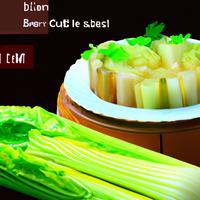
1 serving (100 grams) contains 18 calories, 1.2 grams of protein, 0.2 grams of fat, and 3.6 grams of carbohydrates.

Log this food in SnapCalorie

Nutrition Information
Calories |
42.9 | ||
|---|---|---|---|
% Daily Value* |
|||
| Total Fat | 0.5 g | 0% | |
| Saturated Fat | 0.1 g | 0% | |
| Polyunsaturated Fat | 0 g | ||
| Cholesterol | 0 mg | 0% | |
| Sodium | 154.8 mg | 6% | |
| Total Carbohydrates | 8.7 g | 3% | |
| Dietary Fiber | 3.6 g | 12% | |
| Sugars | 1.2 g | ||
| protein | 2.9 g | 5% | |
| Vitamin D | 0 mcg | 0% | |
| Calcium | 83.3 mg | 6% | |
| Iron | 1.9 mg | 10% | |
| Potassium | 547.6 mg | 11% | |
* Percent Daily Values are based on a 2,000 calorie diet. Your daily values may be higher or lower depending on your calorie needs.
Food Attributes
Source of Calories
About Celtuce
Celtuce, also known as stem lettuce or asparagus lettuce, is a versatile vegetable primarily used in Chinese cuisine but gaining popularity worldwide. Native to the Mediterranean region and refined in Asia, celtuce is prized for its tender, crisp stem and mildly nutty, slightly smoky flavor. Rich in vitamins A, C, and K, celtuce also provides dietary fiber and essential minerals like potassium and manganese, supporting healthy digestion, immune function, and bone health. It is low in calories and contains antioxidants that help combat inflammation and oxidative stress. Both the stems and leaves are edible, though the stems are often the highlight due to their unique texture. Celtuce is typically stir-fried, pickled, or eaten raw in salads, and its nutrient-dense profile makes it a great addition to a well-rounded diet. There are no significant health concerns unless consumed in excessive quantities.



